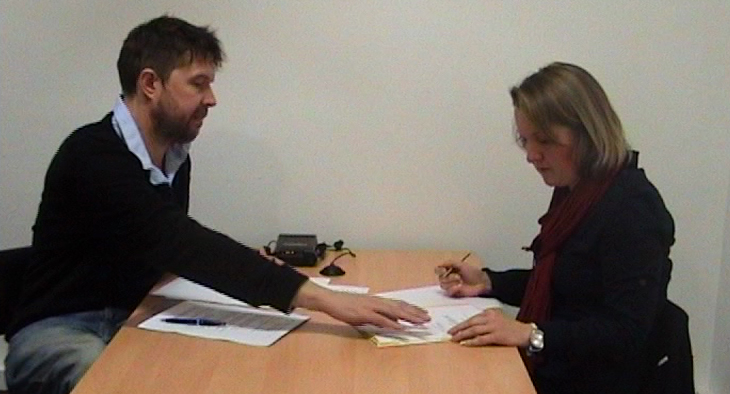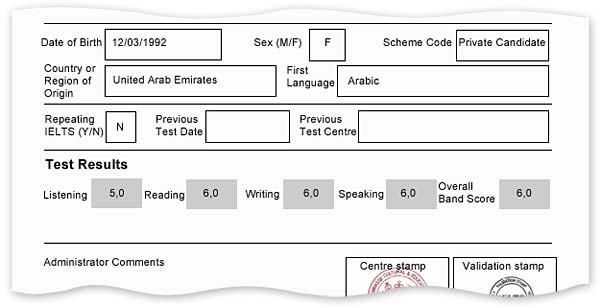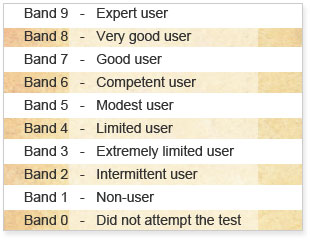1. IELTS quiz: How much do you know about IELTS?

Read the statements below and decide whether they are true or false.
2. An overview.
Read a summary of the important information you need to know about the IELTS Academic test before you begin your preparation. Then summarise the information by completing the table below. (Remember, you can see definitions of the underlined words.)
An overview of the IELTS Academic test
The IELTS Academic test is primarily taken by students wishing to enter universities or training programmes in English-speaking countries. IELTS stands for International English Language Testing System, and is a widely-recognised test of English language proficiency.
The IELTS Academic test consists of four modules or subtests: listening, reading, writing and speaking. The first three - listening, reading and writing - are taken on the same day, while the speaking module may be taken on a different day.
The listening test is always the first test and lasts for 30 minutes. It consists of around 40 questions and is in four sections. Each section is based on a different transcript (that is, a different recorded monologue or conversation). The first two sections tend to be based on social situations, such as a conversation between friends, or a welcome speech to a university or training organisation. The second two sections are more focused on academic or educational situations - you might hear a conversation between a university tutor and her students, or a lecture on desert landscapes. As you listen to the recording, you fill in the answers on the question sheet; at the end of the test, you are given 10 minutes to fill in a separate answer sheet. You hear the recording only once, so you must be prepared to answer questions as you hear them. Before listening to each section, you are given time to read the questions, and during this time you need to think about possible answers and focus on the information you will need to extract from the recording you hear.
After the listening test comes the reading test. This test lasts for 60 minutes, is in three sections and contains around 40 questions. Each section is composed of a text and a series of questions based on that text. The sections are designed to get progressively more difficult. The reading texts, or passages, will come from a wide variety of sources, including newspaper and magazine articles and extracts from a range of books, including university-level textbooks. Some of the texts may contain charts, diagrams or tables that you will be required to extract information from. You are not expected to have specialist knowledge in any specific academic field or subject area; all texts and questions are designed so that they are testing your English ability, not your general knowledge. In the reading subtest, you must write your answers directly onto the separate answer sheet; you are not given time to transfer answers from the question paper to the answer sheet.
The third subtest is the writing test. This test lasts for 60 minutes and contains two writing tasks. You are advised to spend about 20 minutes on the first task and about 40 on the second, and scores are weighted accordingly. In both tasks you are expected to write in a formal, academic style appropriate to the task. In the first writing task, you are shown a table or diagram and are asked to interpret the information and present it in your own words. This task should contain at least 150 words. In the second writing task, you are asked to write an essay in response to a problem, opinion or argument. This task should contain a minimum of 250 words.
The fourth - and final - test is the speaking test. This takes the form of a one-to-one interview between you and the examiner; no-one else is present in the room. The test lasts for between 11 and 14 minutes and is in three sections. The first section, called Introduction and Interview, is a brief introductory conversation and usually lasts about 4 to 5 minutes. In the second section - the individual long turn - you will be given a task card with a topic on it and possible points to talk about. You are required to talk about the topic for 1 to 2 minutes. You will be given a minute to prepare yourself for this talk. The third section is a discussion between you and the examiner, in which the examiner will ask you questions linked to the topic in the second section. You have 4 to 5 minutes for this discussion.
Now choose the correct option to complete the table.
3. Complete the table.
Put the phrases in the correct box. Remember you can refer back to the overview in exercise 2.
4. Task types for the listening and reading modules.

In the IELTS listening and reading modules or subtests, you will encounter a wide variety of different tasks designed to test your comprehension of the texts. It is important that you are familiar with all the different types of tasks, since it is impossible to predict exactly which types will be used in the version of the test that you do.
All of the task types below can be found in the reading test, and most of these can also be found in the listening test.
| Reading and listening tasks | Reading-only tasks |
|
|
Look at some example tasks and choose the correct type.
5. The writing module.

Here is a description of the writing module. Put the words in the gaps to complete the text.
6. Writing task 1 or Writing task 2?
Look at the examples of writing tasks below and label them Writing task 1 or Writing task 2.
7. The speaking test.

Here is a description of the speaking module. Drag the words to complete the text. This exercise is in two parts. Scroll down to see the second part.
Part 1
Part 2
8. The IELTS 9-band scale.
You can't fail the IELTS test! Thirteen days after sitting the test your Test Report Form will be sent to you. The Test Report Form looks like this:

For each of the four subtests you will receive a score between 0 and 9; you will also receive an overall score between 0 and 9. It's essential that you know what score is required to enter the course you wish to do, as these vary widely; in addition, some courses require not only a specific overall score, but that you receive a certain minimum score for a particular subtest as well (for example, to study business at Wharfdale University, you may need an overall minimum of 6.5, with at least a 6.0 for reading).
9. What do the band numbers mean?
This exercise will help familiarise you with what the band numbers actually mean. Look at the band numbers below, then put the descriptors into the correct order (going from Band 9 at the top, to Band 0 at the bottom). The first and last descriptors are already in position.
The IELTS 9-band scale:
Now you are ready to begin the practice and test sections. You can do the practice sections in any order, but remember in the actual test the sections are done in this order: listening, reading, writing and speaking.